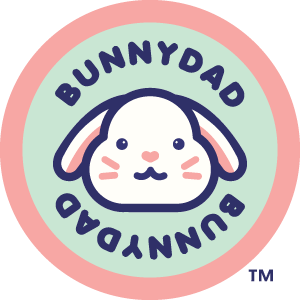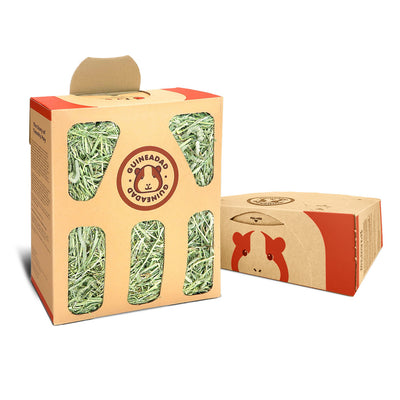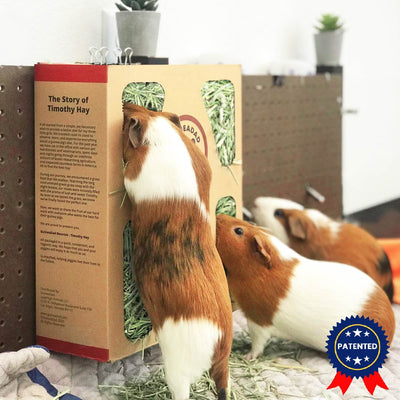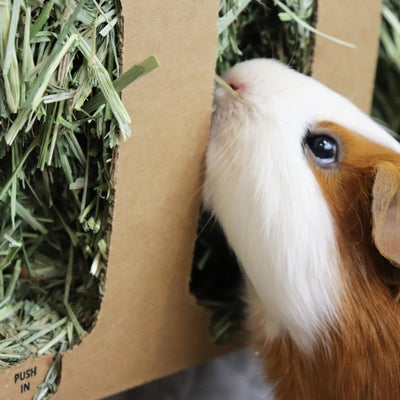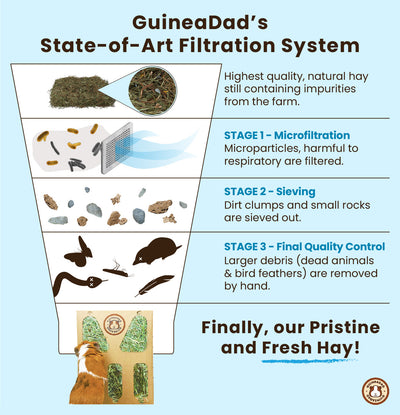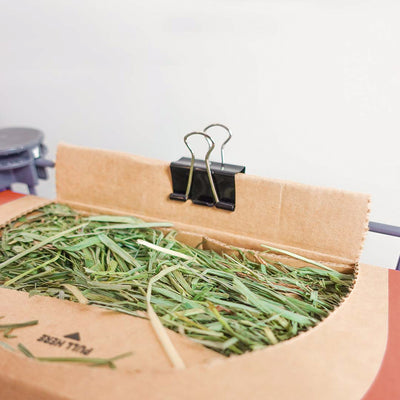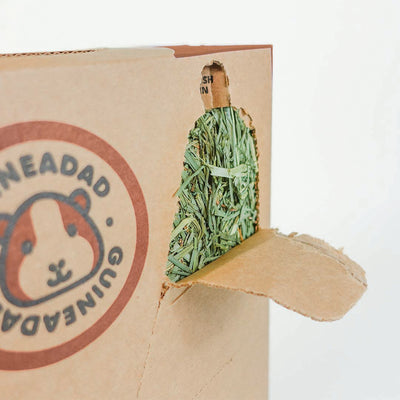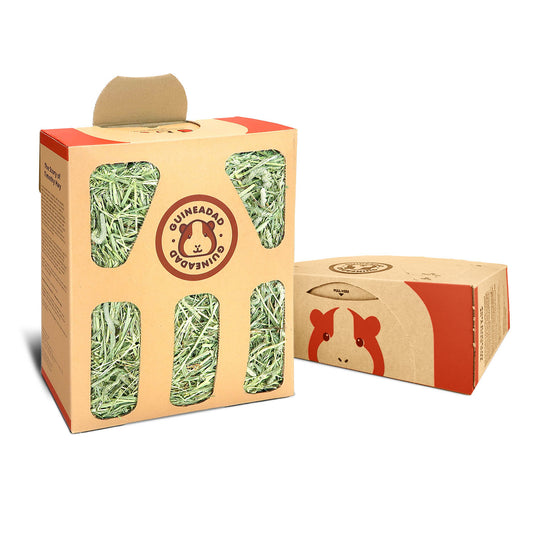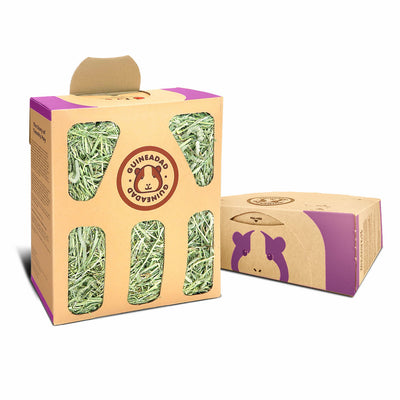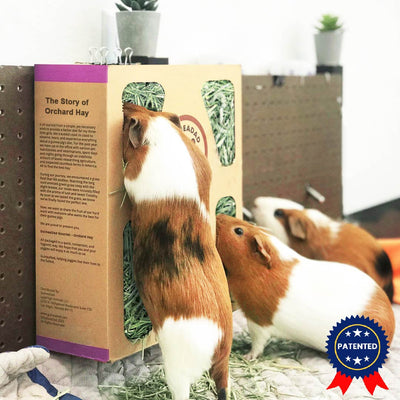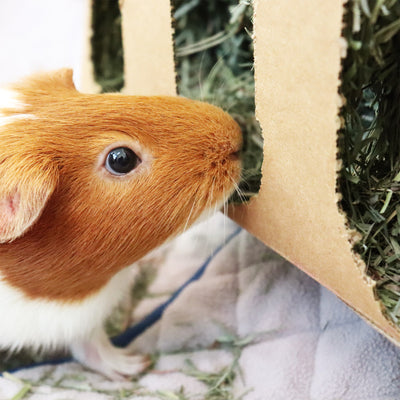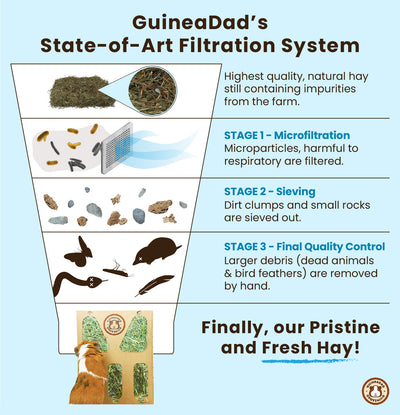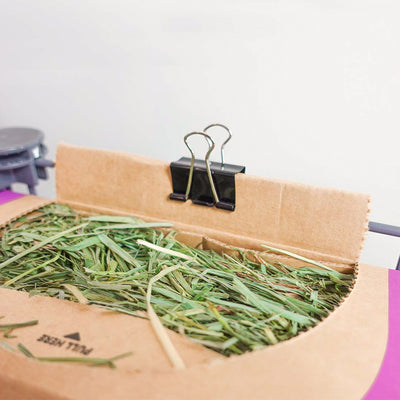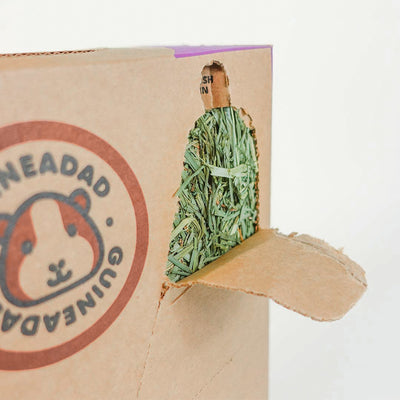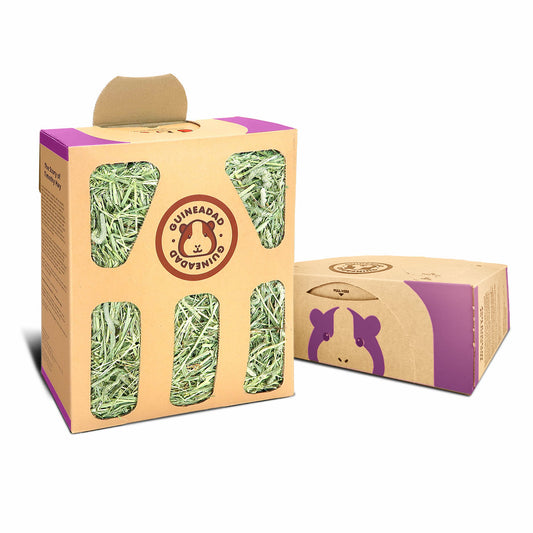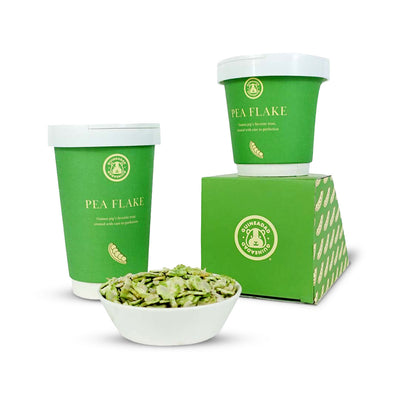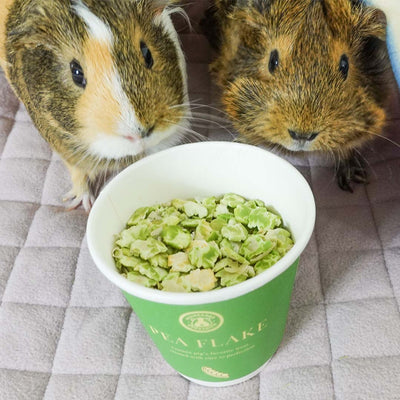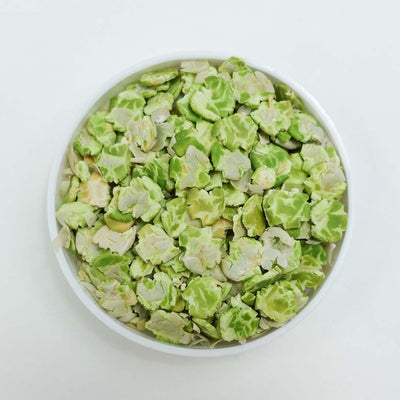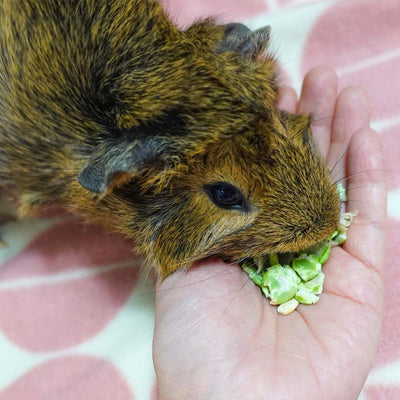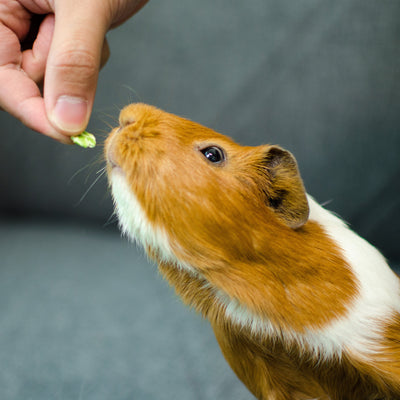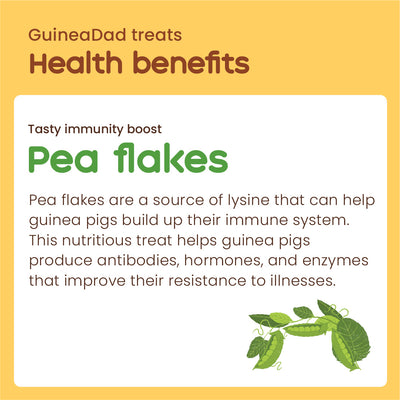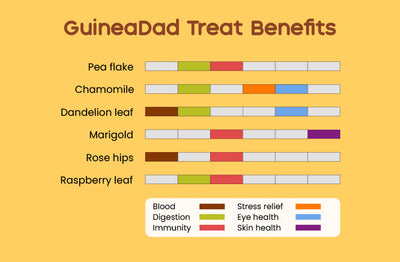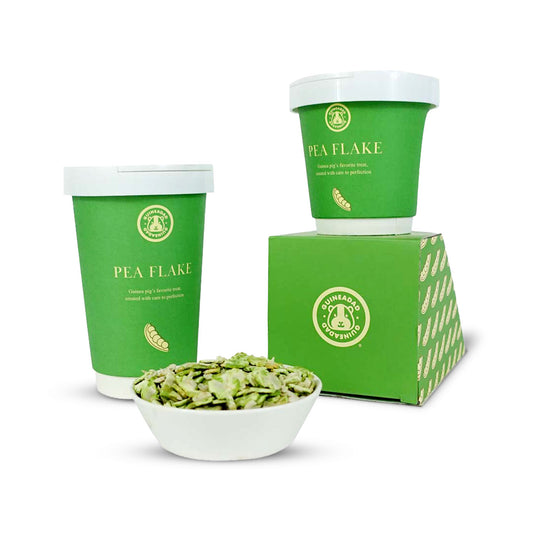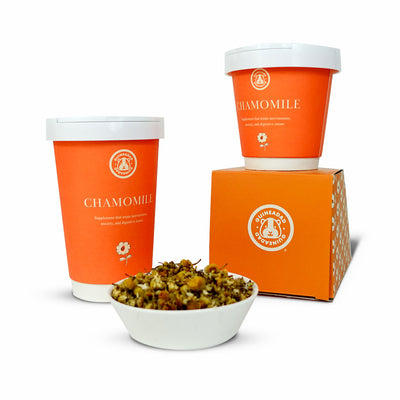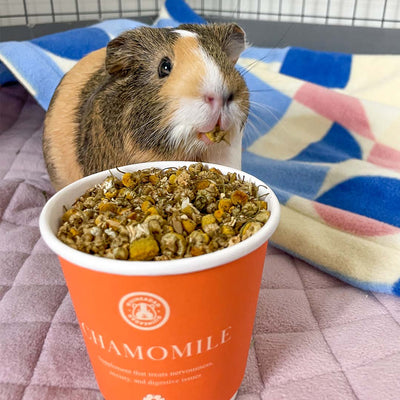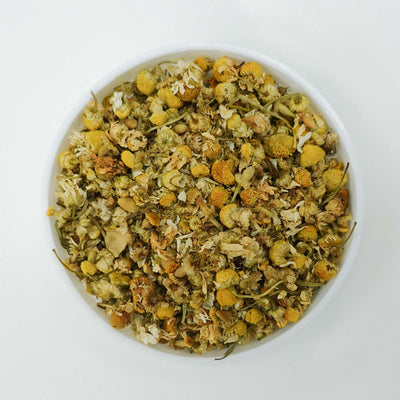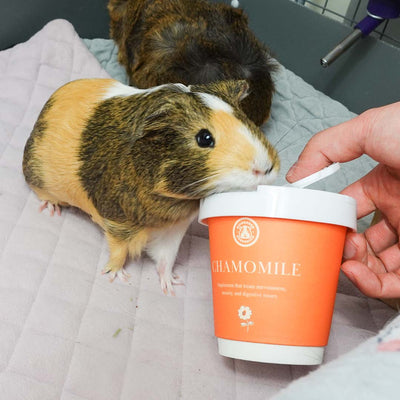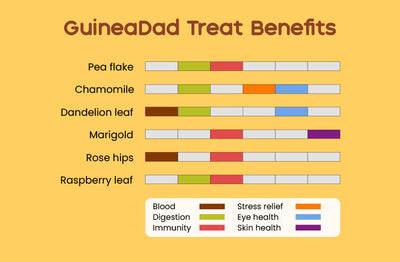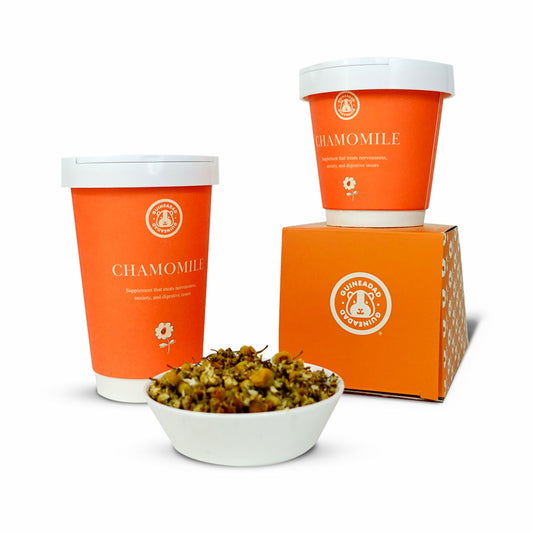One of the fun parts about being a piggy parent, whether your guinea pig has been living with you for awhile, or you’ve just brought them home for the first time, is figuring out which foods they like! We’re going to give you a step-by-step guide on how to introduce new foods to your guinea pig.
What do you feed a guinea pig?
Of course, guinea pigs have a general diet that they should be following in order to get the proper nutrients that they need in order to stay healthy. Guinea pigs have a number of different requirements—you can read about the vitamin C requirement, as well as the calcium requirement in order to get an idea of what you should feed your guinea pig.
Guinea pigs should be eating hay, a small amount of pellets, fresh vegetables and fruits, and drinking plenty of water. If you didn’t already know, hay should be the largest part of a guinea pig’s daily diet. Hay is necessary not only for the fiber requirement that your guinea pig needs in order to be healthy and have regular digestion, but it’s important for teeth maintenance as well.
How much hay does a guinea pig need? Your piggies should be supplied a practically unlimited amount of hay in their cage to munch on at all hours of the day. Their teeth are constantly growing, which is why it’s necessary for them to eat as much hay as they do.
Pellets are to supplement other vitamins and minerals that guinea pigs need in their diet, but pellets make up a relatively small portion of their diet, especially since the serving size for them is usually ⅛ cup per guinea pig!
When it comes to fruits and vegetables, there’s a serving size for that as well! A guinea pig should be fed one cup of fresh vegetables a day. It’s important to note that there are different nutrient contents for each fruit and vegetable, and as such, all produce should be fed to guinea pigs in moderation.
It’s important not to feed too much of any one veggie or fruit to guinea pigs—this is so your piggy doesn’t over consume foods that are high in calcium. We also don’t want to feed our guinea pigs too much fruit! Fruits are high in sugar, which can be unhealthy for your guinea pig because their bodies can’t process sugar the way that ours can.
How to introduce new foods to your guinea pig
We think there can be different approaches to this for each type of food that you’re trying to introduce to your guinea pig—whether it’s new hay, new pellets, or new vegetables and fruits.
Hay
There are different types of hay that guinea pigs can eat, but even amongst the different types, guinea pigs will have different preferences, so it’s important to figure out which one they like the most, while still choosing one that is good for them. The most common types are Timothy hay and Orchard hay for guinea pigs. Orchard hay is especially popular among guinea pig parents that are allergic to hay.
It makes a difference how you’re feeding guinea pigs their hay, as their receptivity to it might change a bit depending on the method you’re using.
Step 1: Choose a hay to start with! It’s safe to say that Timothy hay is the most popular, and it might be easiest to start there. That way if your guinea pig likes this one from the get-go like most guinea pigs, then you won’t have to waste any hay, time, or money!
If your guinea pig was eating a different kind of hay before, it might be helpful to mix the previous type of hay into their new hay to encourage them to try out the new variety!
Step 2: Provide the hay in large quantities. We wouldn’t recommend just placing some hay in a small bowl, but rather in hay racks or feeders.
It’s important to note that hay left in piles is more likely to form more dust than was already there in the first place, especially if your guinea pigs are running through the piles. The hay dust is bad for your guinea pigs’ lungs—excessive dust inhalation can irritate guinea pigs airways and put them at risk for respiratory infection.
We definitely recommend using hay feeders or hay racks for guinea pigs, because it can not only reduce the amount of mess that is lying around the cage, but it will also help keep your guinea pig from soiling their hay with poop and urine. Guinea pigs will not eat hay that is soiled, which means when a rack or feeder of some kind is utilized, there will be less hay thrown out and wasted.
The GuineaDad Hay Bar and GuineaDad Hay Box are our hay and feeder in one, replacing both your hay bags and your feeders and racks! All of our hay is specially selected for the highest quality, and then microfiltered in order to eliminate all dust and any foreign debris. Because we remove all the dust before we package it and then densely pack the hay inside, there’s no opportunity for new dust to form!
The Hay Bar and Hay Box are different packaging options that you can choose from depending on what you and your guinea pigs prefer.
The Hay Box is, as the name suggests, a box with more rigid packaging that is sturdier and densely packed with our specially selected and microfiltered hay. What’s great about the packaging is that your guinea pig is able to munch and gnaw on the box as well—this means it’s great for teeth maintenance as well. Our guinea pigs even enjoy climbing into the box once the hay has been mostly eaten up!
The Hay Bar is our hay packaging option that is softer and less rigid, made instead with a thicker paper. This can be great for guinea pigs who aren’t as receptive to hay being tightly packed! The packaging is still durable, and the hay is still heavily filtered for dust and debris, but it’s not as dense—This means it will be a little easier for guinea pigs to pull their hay out of the package to eat.
What’s great about hay feeders and racks is that it encourages your guinea pigs to be active and put in some effort to eat their food. If you place the Hay Boxes and Hay Bars in different spots in the cage and nearby the areas they like to hide, it will also encourage them to run around to the other locations to eat, while also accommodating their desire to burrow away!

Pellets
When it comes to guinea pig pellets, the brand doesn’t necessarily matter, since the idea behind pellets are relatively the same—they’re meant to supplement your guinea pig’s diet with the vitamins and minerals that they don’t get from other areas of their diet. The general serving size for most guinea pigs is ⅛ cup, unless your guinea pig is overweight. If that is the case, then we recommend reducing the amount of pellets you’re giving them.
If you’re looking to change pellets for whatever reason, you will still need to introduce it to your guinea pig somehow, but there is a preferred method.
Step 1: Replace about 25% of the old pellets with new ones, and mix them into their old pellets.
Step 2: Keep doing this and increase the amount of new pellets each day until you're feeding them only the new food! We recommend going from 25% to 50%, and so on.
This can help out guinea pigs that aren’t as great at trying new foods and need to “dip their toe in” as they say.
Fruits and Vegetables
As mentioned before, it’s important to note that a guinea pig needs about one cup of vegetables and fruit per day, but it’s important to feed piggies these things in moderation. This is especially the case with fruit, as they are generally high in sugar content and guinea pigs can’t process sugars as well as their humans can.
One of the fun parts of being piggy parents is letting them try different vegetables and finding their favorites! There are a few steps for introducing new produce to your guinea pig.
Step 1: Check the nutritional facts of the vegetables.
The information that you want to pay the most attention to is the vitamin C content, as well as the calcium and phosphorus content! Vitamin C is extremely important for guinea pigs, and it’s important that they consume large amounts of it. You can read more about why here.
When it comes to the calcium and phosphorus content of vegetables, this is pretty important because we don’t want to feed our guinea pigs too much calcium! While it’s still very important to their diet because their body needs it to function properly, we also need to keep an eye on the amount. There is something called a calcium-to-phosphorus ratio (Ca:P), and the ideal for vegetables that are safe for guinea pigs is 1.33:1. You can read more about that here.
We have a Vegetable Master List and a Fruit Master List that you can reference in order to quickly see how much vitamin C is in each produce item, as well as the Ca:P—this makes it easier and quicker for you to pick and choose which vegetables and fruits are safe for guinea pigs. We also include serving size and frequency!
Step 2: Give them a very small amount of the new vegetable.
Don’t follow the full serving size right away! The reason this is important is because you first want to see if the fruit or vegetable is agreeable with your guinea pig—this is to ensure that the new produce doesn’t cause any digestive problems for your piggy. It’s not just about seeing whether or not they like it!
Once you’ve determined whether your guinea pig can handle the new veggie and they seem to like it, you can increase the amount you’re giving them, but maybe not the full serving size just yet.
Step 3: Gradually increase the amount you give them to the full serving size.
Once you’ve determined that there aren’t any adverse health effects on your guinea pig, you’re able to feed them the full amount of the general serving size for that veggie or fruit. Remember that your guinea pig should be getting a cup of fresh produce, and that it should be a variety in order to get different vitamins and minerals from each of their foods.
If your guinea pig doesn’t seem to like something, that doesn’t necessarily mean that you should give up! Our guinea pigs, Ru and Mi, didn’t really like bell pepper when they came home with us at first. However, we kept trying and including small amounts of it in their piggy salads, and eventually they began to like it! We’d even go as far as to say that it’s one of their favorites.
Be patient!
Guinea pigs aren’t that great with change overall, whether it’s in the environment or their foods! It’s important that we stay patient and do what we can to expand their palette and make sure they’re able to enjoy a variety of foods, but it’s also vital that we do it at their pace!
As guinea pigs become more comfortable and accustomed to the different changes in their diet, they’ll be more open to trying new foods! Make sure that you’re keeping an eye out for any changes in their health while introducing them to different food items. If they experience things like diarrhea or their urine changes, make sure to stop feeding them the new food right away and consult your veterinarian!

